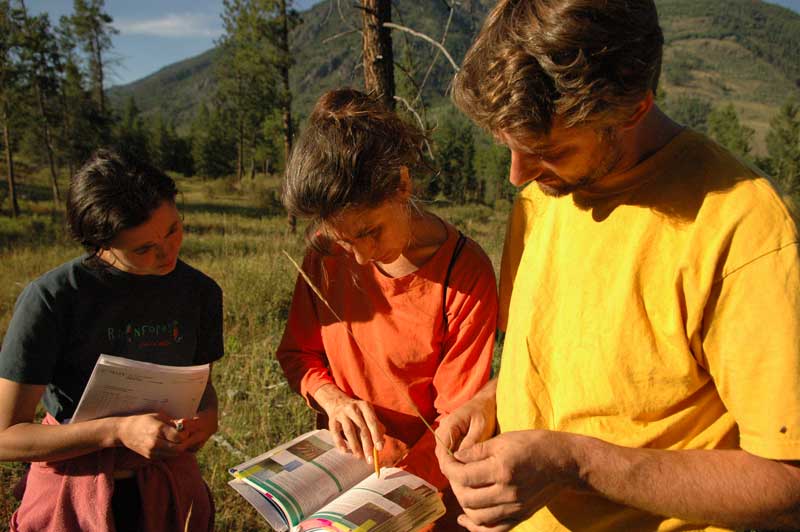Or getting paid to undertake spiritual training
Spiritual training
Historically, spiritual training took place almost exclusively within the monastery or convent. Nowadays few of us spiritual practitioners enter that kind of orthodox context. What then? We suggest that the workplace – whether a company, clinic, factory, studio, etc. – comprises our contemporary spiritual training ground.
If a convent or monastery was the training arena for establishing a connection and interface with God (in the Judeo-Christian traditions) or awakening (in the Buddhist tradition), how was this accomplished? And what does it look like today?
And given that any higher power is intangible and immeasurable, how can training reveal an invisible and indescribable state that we call ‘awakening’?
Perhaps the key word here is ‘state’. ‘Awakening’ could be characterized as an unfathomable field of experience. We try to give it definition by calling it ‘pure perception’, a state that lies beyond the blinkers of self-referencing.
We can begin to access this state by cultivating that which lies within the bounds of what we’re able to define. Various exercises, methods and disciplines are conjoined with community involvement and collectively called ‘training’: these are the parameters of the defined territory.
The state is ineffable, and as such it’s better referred to as a gerund, or ‘being’. There’s a physiological experience whereby a person can be said to be ‘awakened’, and yet it is not a static state: rather it’s an eternally evolving process of ‘awakening’. The boundaries of the training produce the containment shell for this awakening, encouraging it to reach critical mass.
Consider water at a dam. When the water goes over that dam, new territory is shaped and discovered. The dam in this metaphor is the training; the water is the awakening. If the dam has leaks, the water can never be well encompassed, and thus can also not reach the required energy to transcend its limits.
Karma Yoga
If we consider dharma training as the dam, its most powerful contemporary vehicle for spiritual practitioners in the world is karma yoga, the path of service. Historically service took place as part of training, either in monasteries or by yogic withdrawal to forests, cave, mountains and deserts.
Our current dilemma is that our busy, complicated and stressful lives often manifest as leaks. But do they have to?
In a monastery we are trained to be ever mindful, do our particular practice, work with concentration, determination and commitment, enthusiasm and (yes) joy. We are instructed to focus on compassion and loving-kindness and to treat the Golden Rule as sacrosanct. It’s a full time occupation with few breaks or interruptions. There is little room for debate, argument or second-guessing. And as a system, for thousands of years it produced many clearer, brighter, more caring and even awakened beings, particularly in the East.
Let’s look at the key words here – concentration, determination, commitment, enthusiasm, joy, compassion, loving kindness and full engagement. These are the keys to ‘successful’ practice and, ultimately, awakening itself.
A daily practice and regular meditation retreats helps the transcendental energy build, but it won’t get the water over the dam. It helps us to maintain a relatively good state – wonderful in a troubled world – but it may be shaky when subject to harsh conditions such as the stress of divorce, unemployment or illness and death.
Our practice requires regular and serious challenges to make it unassailable. When we intentionally undertake these challenges by overcoming our fears – whether it be going skydiving, going a day without coffee, wearing clothes we don’t think of as suiting ‘us’, or generally doing things to purposefully stretch our comfort zones – then we’re in a stronger place to respond to the discomfiting situations that life can sometimes deliver us.
Interestingly, mindfulness, concentration, determination, enthusiasm, etc. are also required for success and satisfaction at our workplace.
However, the motivation is different, and so is the goal. In business it’s generally success and profit measured by income and market share. In the monastery it’s awakening and compassion measured by mindfulness and interdependence.
Nowadays few of us want to live and practice in monasteries, or feel that it’s even possible; most of us feel we need to make a living and develop a career. Still, we may desire a richer spiritual life, a wellspring to nourish our hearts and souls from day to day.
How then can we build a bridge?
Article by Doug Duncan and Catherine Pawasarat
This is the first chapter of a four part series on the Dharma of Work. Continue reading The Dharma of Work (Part Two), Part Three and Part Four.


